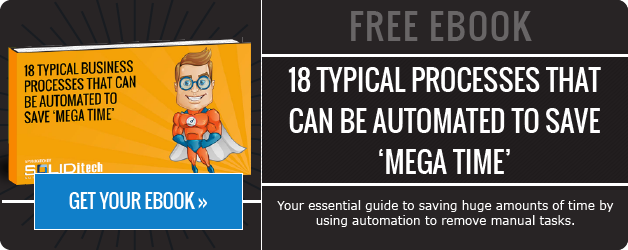In today’s society, where customers expect near-instant gratification, it can seem just about impossible to reach the market with your brand new product before your market has gotten bored and moved on to the next ‘big thing’.
Time to market (TTM) can either make or break the success of your company’s new product; it’s the length of time a company takes to conceive, process and deliver a product to their customers. Think of it as a piece of the foundation towards the success of your new product.
As shortening TTM can be no easy feat, here are 6 things you can do to make it as realistically short as possible:
1. Realistic Goals and Deadlines
Timing is everything. You don’t have to be the very first to your customers, but what is the point if you are entering the market either too early, or too late?
Keeping realistic deadlines not only sets the standard for your team, it sets your clients expectations. This, in a sense, buys you time, as now they now know what to expect from your brand.
A few ways to make setting realistic deadlines a bit easier are:
- Break it down into bite-sized chunks - Having smaller, individual tasks appear far more manageable than a large, single project. With each task set out clearly, the risk of letting something slip through is minimised.
- Let Technology be your friend - It can be as simple as entering deadline reminders and scheduling meetings in your Google Calendar. If you have a number of deadlines coming up (and realistically who doesn’t?) you could also use project management tools such as Gantt charts or Trello.
- Have a buffer - In order to make sure you do meet the deadline, despite any mishaps, give yourself a small cushion of time to account for any delays.
Always make sure that people know it is okay to ask for help. If people are comfortable asking for help, they won’t waste time “uhhrmming” and “ahhing” for three days before finding someone who could help fix the problem immediately.
2. Prototypes
There’s no point in perfecting a product if it doesn’t meet the needs of the customer in the first place; time, people and resources will be wasted (Inc.).
With prototypes, you just need to show off the main purpose of the product. Once you have the prototype worked out, you can then start fleshing out and perfecting the finer details of the product.
Prototyping a product before sinking your full resources base into its development allows you to test and work through any technical issues, optimise the efficiency of the product as well as tailor the specifications to be as detailed as possible. This all ensures a smooth product release and minimal technical problems once clients start using the product (MockPlus).
3. Know your Team and the Tools you Have
It doesn’t help to build an amazing prototype of a product that your support team cannot support - either through lack of skills or tools. The production team must keep in mind what the support team can realistically replicate/support and provide to your target market without breaking the bank or taking months to do.
This can also be said for the customers using the product. If your product is built on a platform that is inaccessible to your target market, then why bother with your product in the first place?
Therefore, it is vital to know the limitations of both your customers and your support team when building your product.
4. Have a Clear Understanding of what the Customer Needs, Products Requirements and Specifications
Where do you start if your team doesn’t know what the customer needs? Having a clear understanding of the the product specifications affects four parties:
- Development team - will be able to create the product in a timely manner without wasting time or resources.
- Support team - will understand what is expected from the product, which will enable the team to manage the product efficiently.
- Management - will understand what to expect from each team and can therefore give appropriate guidance provide the necessary capital and resources.
- Customers’ wants & expectations - If customers know what to expect from the product and have their expectations met, the company will have a happy and loyal customer base.
- If clear product requirements are laid out - each person involved will have a better understanding of what is expected of them and what to expect from the end result.
5. Parallel Processing
In order to save time, each department involved with the new product should be able to work together simultaneously in order minimise time to market.
- Admin team - supports each department and ensures everyone has what they need to do their job.
- Marketing team - while your development and support teams are prepping the actual product, your marketing and sales teams should be preparing the market for the exciting new product.
- Management team - will know what to expect from each team and will know where to step in and assist when necessary, should a team be struggling.
Not every company has a Project Manager that can make sure each and every department works in parallel with each other. But there are project management programs that can be used to help keep track of what has been scheduled and achieved, and to keep communications open between departments, such as Trello or Basecamp.
6. Automate the Back-end Processes
Don’t sweat the small stuff. An automated back-end system basically means that input information is processed through a set of predetermined actions - providing a uniform process, and consistent results each and every time.
So no matter how many times you hit that “go” button, the same procedure will automatically occur. There are a number of reasons to automate:
- Scalability - your company’s systems and processes must be able to grow (or shrink) with your business in order to successfully accommodate new products. You’ll be able to scale your systems to suit your product line, rather than having your backend systems (or lack thereof) limit your product line.
- Time Savings - You can save hours and hours of manual “paper” labour.
- Easy to find - Everything is saved on a single, paperless database. Not only do you get to save trees, you don’t have to go on a massive paper hunt every time you need to find certain documents.
By allowing the backend processes to be done automatically for you, you can save time, money and your sanity. The development team can focus on the important parts of your company, such as developing new products, managing current products and nurturing relationships with your customers.
Getting to market in a timely manner supports pricing, profit margin and market share goals - it also drives revenue and customer growth. Being the very first to market is not necessary, however, it is beneficial that you at least get to the market when it stills makes sense.





Comment